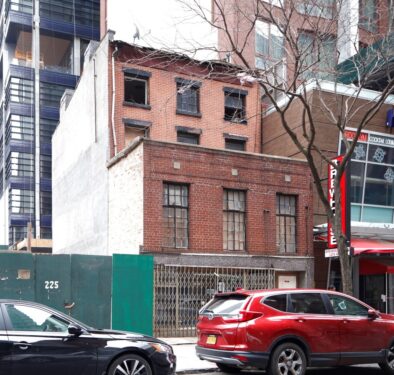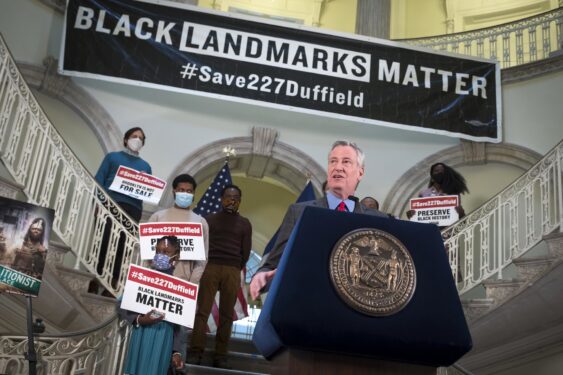
Duffield Street landmark is victory for community
DOWNTOWN BROOKLYN — The work of grassroots groups who pushed for landmark status for a historic building tied to the Underground Railroad finally paid off when the New York City Landmarks Preservation Commission issued the long-awaited designation.
The building at 227 Duffield St., a Greek-Revival style former row house, is a rare example of a surviving 19th-century abolitionists’ home, according to LCP officials, who issued the declaration on Feb. 2 as a kickoff to the city’s celebration of Black History Month.
The designation comes after years of advocacy by local organizations like Friends of Abolitionist Place, Circle for Justice Innovations, Equality for Flatbush, and Families United for Racial and Economic Equity (FUREE), which mounted a campaign to win recognition for the building.
Imani Henry, founder of Equality for Flatbush, said much of the credit for the victory goes to the late Joy “Mama Joy” Chatel, who lived in the Duffield Street house for many years and worked to raise awareness about the building’s history. Chatel passed away in 2014.
“She fought to get the place landmarked. It was a decades-long struggle,” Henry said.
In 2007, Chatel beat back the city’s attempt to demolish her house through eminent domain to build a park and an underground parking garage.
“This is a victory for Mama Joy and a victory for the abolitionists’ struggle,” Henry said of the landmarking.
The Duffield Street location was the home of Thomas and Harriet Truesdell from 1851 to 1863. The couple was active in the abolitionist movement and faced great danger because those who helped slaves to freedom were violating the Fugitive Slave Law, an 1850 statute requiring escaped slaves to be returned to their owners.
Brooklyn was a hotbed of abolitionist activity due to its proximity to the water. The waterfront was the entry point for many escaped slaves who stowed away on ships and hid in buildings that were part of the Underground Railroad.

“The battle for justice in this country always has been — and always will be — fought in the heart of New York City,” Mayor Bill de Blasio said.
“The Truesdells were active abolitionists during a decisive period of resistance, and their legacy of commitment is representative of the many abolitionists who supported total emancipation as part of the local and national movement,” said LCP Chairwoman Sarah Carroll.
The fight for landmark status also included a petition on change.org launched by advocates.
“With a lack of African American historic sites in Brooklyn, we cannot stop at the installation of statues recognizing historical figures. We must also work to preserve the physical movements of our ancestors,” the petition read in part.
In 2007, the city co-named Duffield Street’s block between Willoughby Avenue and Fulton Street “Abolitionist Place.”
The landmark designation for 227 Duffield St. comes at a crucial moment, said Borough President Eric Adams.
“At a time when our nation continues to face a reckoning over the long and painful legacy of racial injustice,” he said, “remembering and permanently enshrining these pieces of our history has never been more urgent.”
